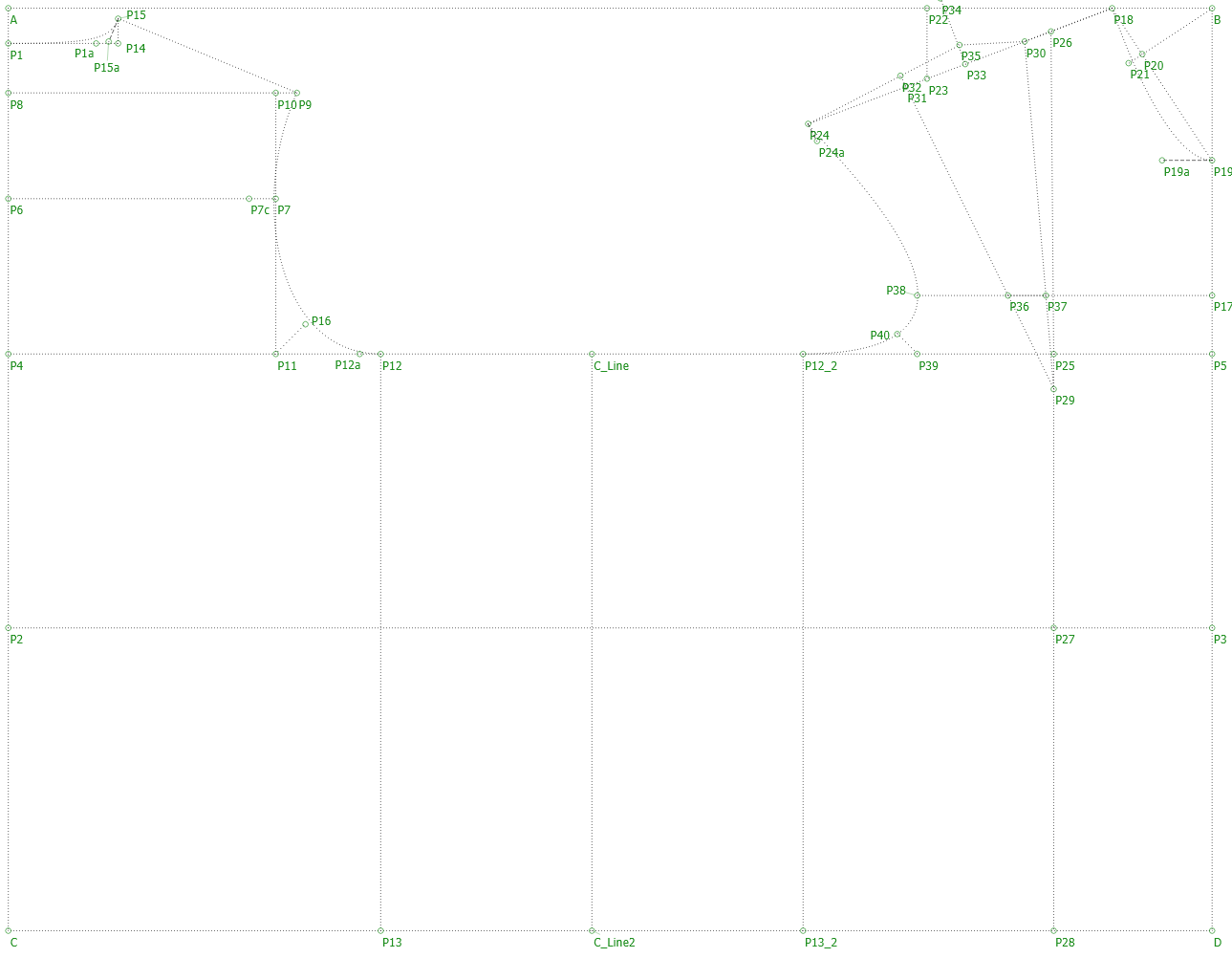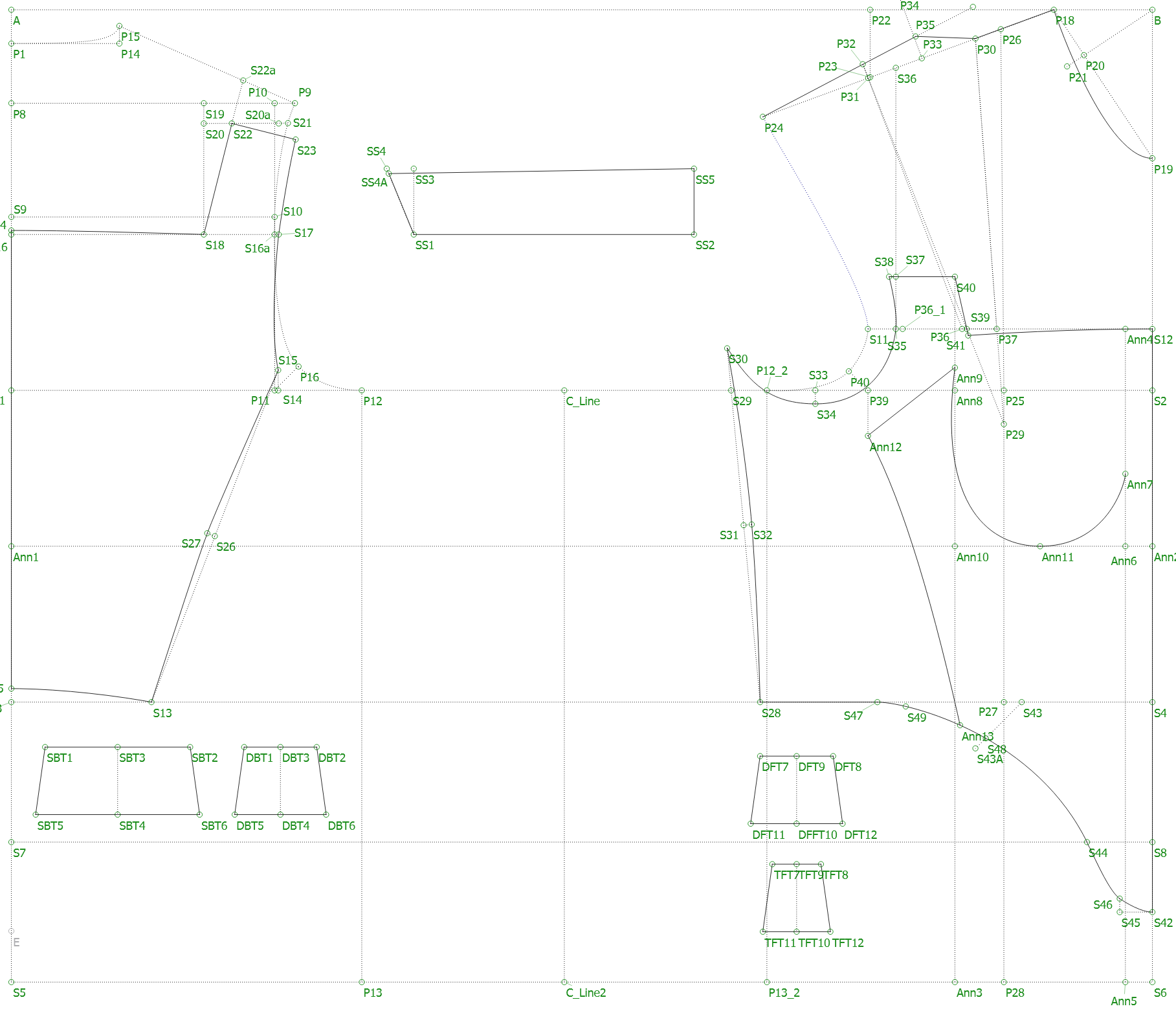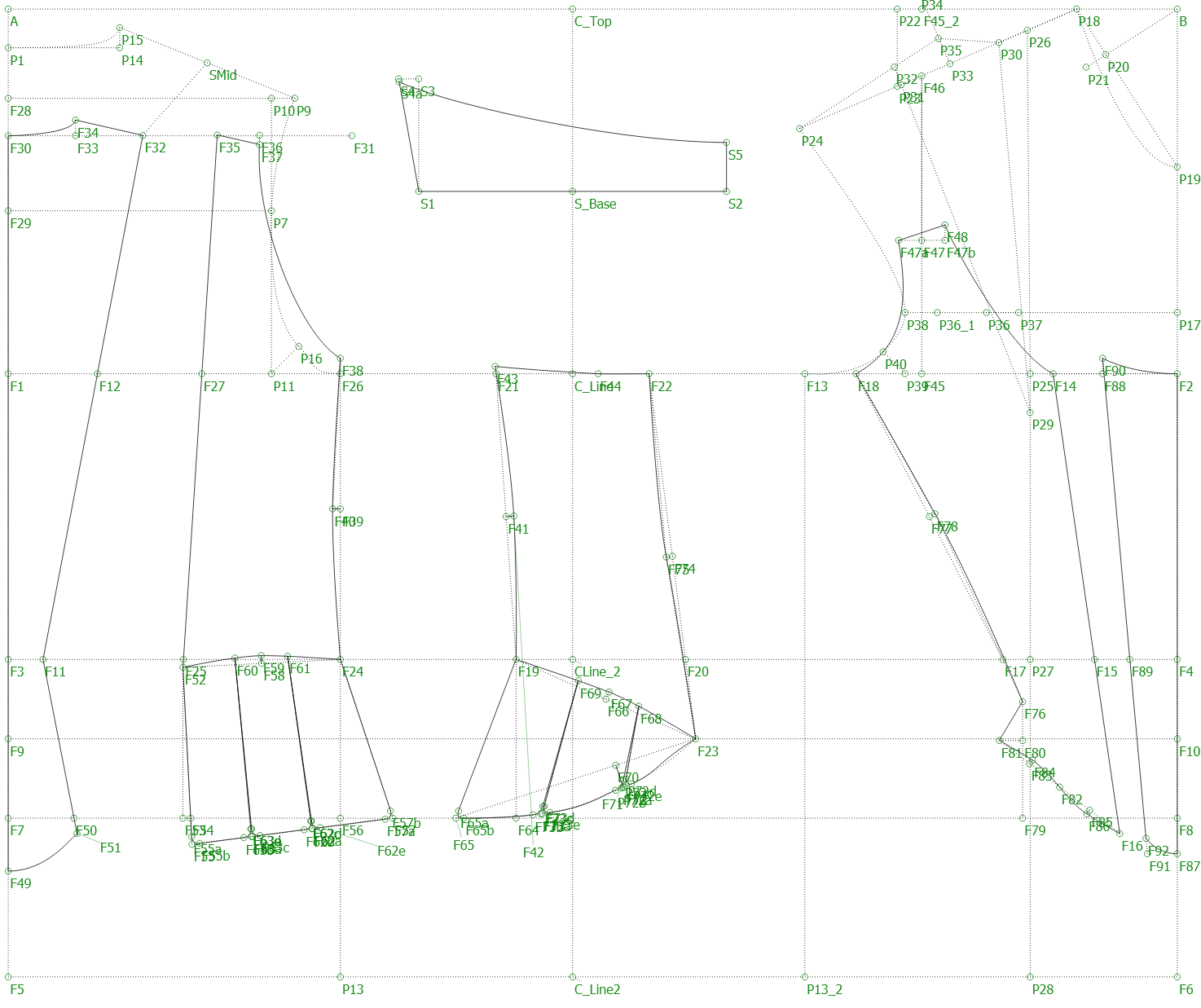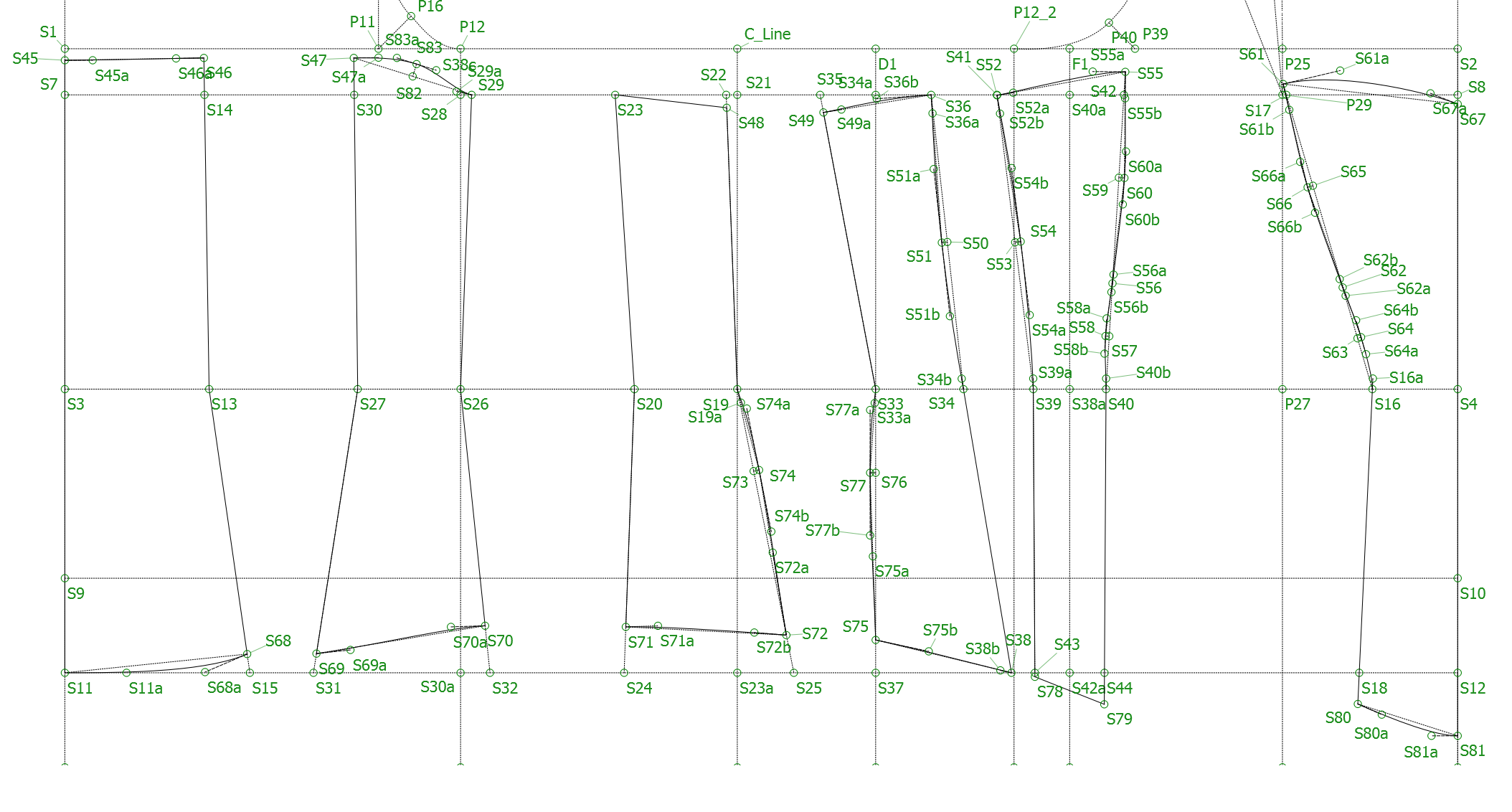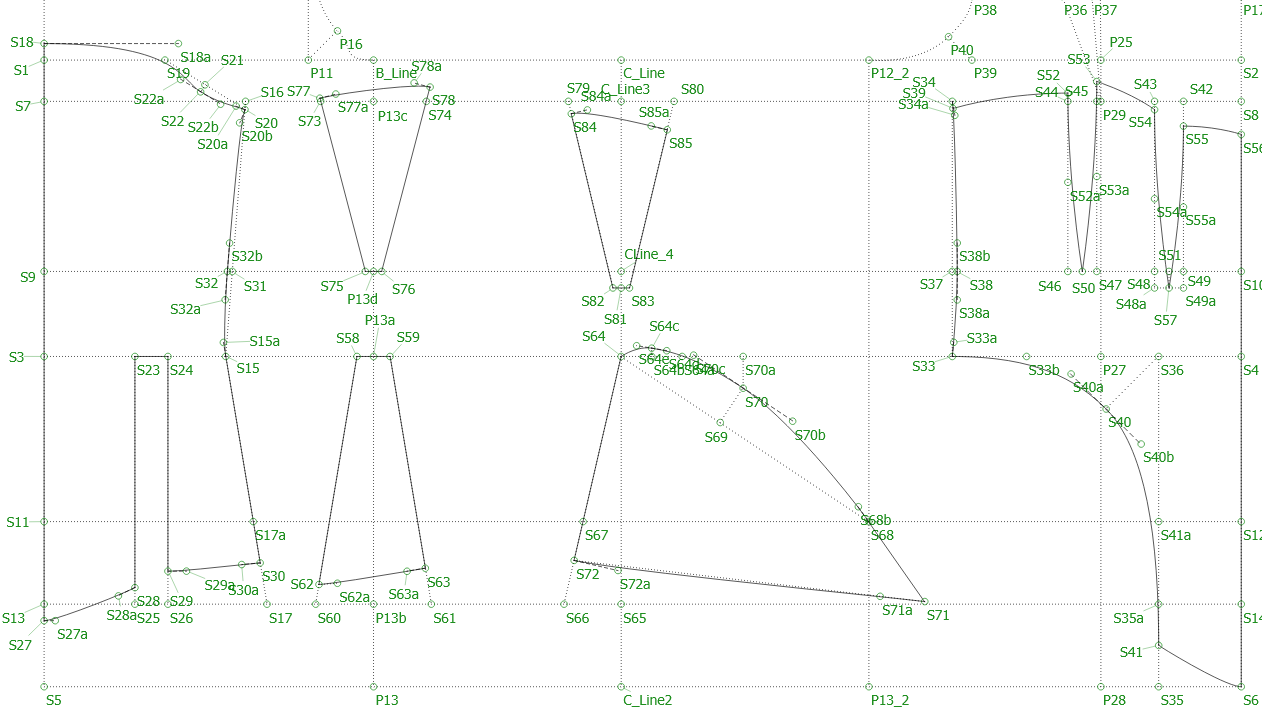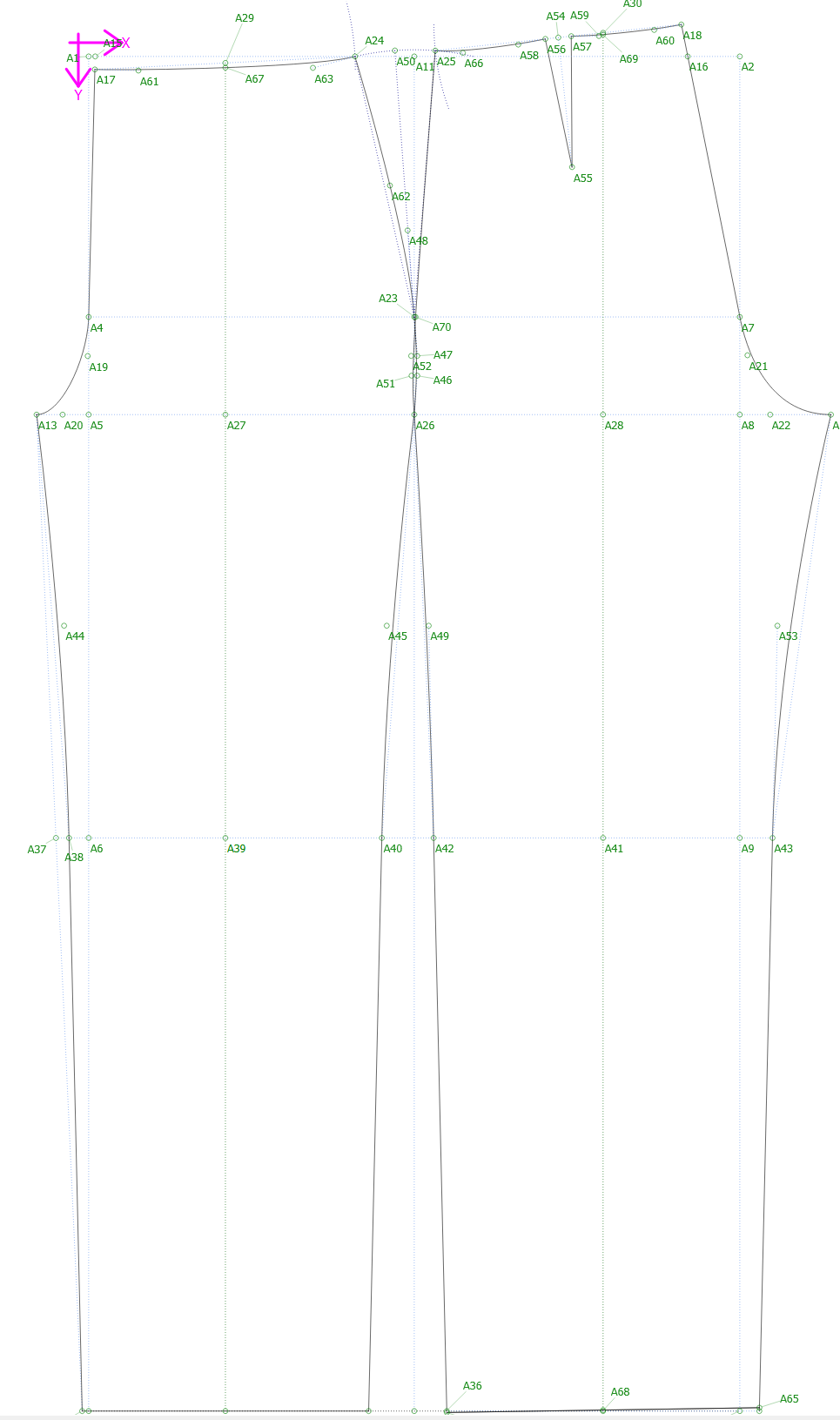This is my repository of sewing patterns which I've added and updated and hopefully improved from multiple references. I'll be releasing YouTube videos of not only how to draft patterns in software like Seamly2D (I've recorded a few already), but also how to edit them in other programs like Affinity Designer, Fusion360... and also I'll release videos on how I sewed the patterns.
I tend to focus on historic patterns, particularly for women's wear as I find it infinitely entertaining to make use of computers, 3d printers, laser cutters, milling machines, sewing machines... to reproduce garments from hundreds of years ago and men's clothing, while quite nice to look at, leaves me far fewer opportunities to employ advanced techniques and tools.
For example, I tend to sew prototype corsets using nothing but 3D printed bones... which is far more convenient than battling with syntetic whalebone and other materials.
I found myself volunteering on the weekends to help at a sewing store where I fix sewing machines on the weekend. This is a pretty big store and they do about 30-50 machine repairs a week, so I find it quite fun to go there. Recently, a woman delivered an old Singer machine. This woman is in her golden years and I would guess she received the machine early in her marriage and it has sentimental value to her. These old Singer machines seem to have a gear which more or less self destructs after about 50 years and under normal circumstances, the store would inform her that there's not enough money to be made on the machine to justify repairing it. Honestly, it would end up costing her $400 and you can buy far better machines today for that much. But since I got the machine first, I decided I'd fix it. I've been designing and 3d printing the parts which break. She justifiably was really nervous when she heard that, after all, she's likely on a fixed income. But I explained that I didn't want to see a perfectly good machine sent to the graveyard just because it's old. So, I charged her only for the parts... about $3 US.
Sewing is such a great thing to be part of.
Let me start by saying, Mandy is among the most talented authors of books for pattern drafting I've come across. I love her work and I've already told my wife I intend to sew every pattern in both of the books at least once. I'm most of the way through sewing the 1735 Fully Boned Corset from volume 1 and it's great. I didn't make videos of this, but I will post pictures. If I ever find someone willing to model it and get there measurements, I'll consider sewing another as I've learned a lot from this experience.
I'll be entirely honest here. Yes, you can use these patterns and my videos as I make them, but you REALLY should not try making these corsets and stays unless either you really really know what you're doing or you have the book. My stuff is not a replacement for the book, I'll using lots of what I read in there.
I've provided files containing all the sizes in the tables in the book. They seemed a little wonky to me, but I'm not really an expert on sizes.
The corset base is based on the bodice block from the book. The bodice block and the corset base have multiple severe problems which I'm trying to work through. I understand that in a book, Mandy avoids employing trigonometry and calculus as I believe it would terrify most people. This means that when flat drafting you'll never get the curves or the intersections right. But I could imagine how terrified people would be if they read the lines
Now calculate the second derivative of the Bezier curve in Berenstein's form and then calculate the adjacent angle to the....
But honestly, it's quite impossible to make a proper block without considering ratios rather than arbitrary values constant values. I'm working through these little by little and I've made some big changes to my version of the Corset Base in hopes of being accurate and within the spirit of Mandy's intents.
I'm currently evaluating the blocks to attempt to consider vertical bust position and fullness. Using the book as a reference, unless the intended wearer of the corset is almost precisely the same dimensions as Mandy, the block will be completely out of shape and will require a whole lot of alterations. And this is fine in traditional design where draping is a considerable component of the job. But I believe that if the designs in this book are updated to consider the shape of the wearer who more than likely won't be Mandy's body double, it should be possible to get it right on the first mockup nearly every time.
Mandy's books are fantastic and this design was truly cool to work with so far. I've made some videos of getting the pattern into Seamly2D, but I've found a good share of errors in this pattern and I have no idea how to contact Mandy about submitting errors or how to fix them. As I tweak the pattern, I expect that I'll resolve the issues myself and then whoever wants to can just use my file.
I've already been experimenting with fitting this pattern and preparing the boning. Once I have more information, I'll post the videos and start sewing. It's a pretty easy pattern to sew, but what makes this pattern a technical challenge for me is that I don't have a laser cutter or plotter large enough to mark fabric. But I have a plan!!!
I've invested MANY hours in making this one.
I started with Mandy's book and it was the first pattern in the first chapter. I had never used Seamly2D before (as I wrote my own program for this purpose) and I had to learn the program and this pattern came out great.
I think I can do more work on the splines/curves, but if someone wants to test it with their sizes and give me feedback, I'd love to update the pattern and fix the issues. Other than the boning channels, I've nearly hand sewn the entire corset and it's coming out great though I'm regretting the cover fabric I chose. Either way, I'll post pictures soon.
There was clearly a major quality difference between Mandy's first and second book. There were endless problems with this pattern. there is certainly no doubt this pattern is hers, but I think there's been substantially more added to it by myself.
I can't seem to find the right way to fix her top lines shaping under the arm. I will sew one up for a dummy I 3D printed (it's an intentionally small woman's form for the purpose of testing sizing. Here in Norway, tall women grow on trees, short ones aren't easily found). and I'll see if I can sort out the remaining problems.
This however is the first pattern I've put into Seamly2D where I attempted to make adjustments for all sizes. So, rather than just "eyeballing the curves" as Mandy recommends, I instead make control points to hopefully properly shape all the curves. And when testing in Clo3D, I'm generally within about 0.1mm differences on the seams.
I was watching a wonderful YouTube channel from Bella Mae's Design
And Bella Mae did a truly fantastic job eventually constructing a corset she found in Corsets and Crinolines by Norah Waugh which is a marvelous book that I've personally borrowed from a friend, but I believe will finally break down and buy for myself. In fact, from what I can tell Mandy Barrington has made multiple references to this book in her own.
Well along the pay to Bella Mae's fantastic 1860 corset, she started with this 1875 quilted corset, but with a different series of boning channels. She made several mockups of this design, but she never quite got it right and I believe I know why.
Mandy makes a lot of interesting leaps of faith with regards to measurement. I really really appreciate her books as starting points, but the drafting methods she provides really only work if you're almost a precise body twin of hers. Of course, if you're great at math, it's actually pretty easy to fix most of the problems with her designs. So, I still think her books are treasures I'd never separate with.
Anyway, as always if you find bugs with my designs... let me know. I'll work on fixing them!
So I stumbled across the site The Shapes of Fabric this morning while waiting to drive my wife to work. And WOW! What a lovely site.
As with almost all sites that are focused on flat pattern drafting, there are some odd arbitrary values for where to put parts of the patterns. And rather than designing seams that are true, there's a long guide on how to fit the designs. But I suppose I should just expect that by now.
I'll tell you the thing which I'm not quite happy with. The first pattern I tried to work with was the basic skirt block. Those are easy and it gives you a pretty good idea how the rest will go.
Well, unless you're a very unusually shaped person, your waist would generally be a little more padded towards the front and your hips should be quite a bit more padded in the rear... as well that's where your rear is.
The sloper for the skirt doesn't take this into consideration. Rather, it basically just splits things down the middle. I like the simplicity of the pattern and I'll make my own based on the site's, but a pencil skirt made from a woven fabric using this sloper will require a lot of alterations.
The GREAT news is that the site really goes into excellent detail on how to fix the design. The bad news is that a well made sloper shouldn't really need much alterations. You should be able to simply take the measurements and go.
It may seem as though I'm being overly critical of the slopers from this site. I LOVE THIS SITE. I just feel as though the slopers will need a lot of adjustments if you intend to use them for fitted garments for a variety of sizes. On the other hand, the excellent work done on descibing methods of altering patterns is truly beautiful.
Maybe I'll be able to clean up the slopers and donate the updated versions to the web site.
This is the skirt sloper. The preview is a miniskirt as it was easier to work in the software with a shorter skirt. But if you just change the skirt_length variable, it will generate the length you want.
I think I'll make a few alterations to the pattern shortly which will shift the waist and the hips proportionately to the front or back. I think the side of the shirt should move a bit more to the front to leave room for the behind. And I think the waist should be moved a little more to the back to allow for the abdomen.
This design was a bit better than the skirt and I took a few liberties with it. I'm happy with most, but I'm still a little grumpy about a few of them.
-
The block doesn't account for the length of the leg, it's not true. So, I corrected the pattern by messing with only the back. I think I should do the same to the front and make it meet part way. The difference using the original measurements provided by the web page caused about a 1.2mm longer outside seam on the front and a 2.5mm shorter inside seam on the front. And I corrected only in the back and it looks awkward. Honestly, unless a robot were sewing this, it would never be noticeable if I just left it alone, but I just had to mess with it.
-
The crotch isn't true. I did my best to make it so the crotch would line up, and I think it's close, but it's not quite perfect. Modifying this design for wide leg could be a problem because of the crocth
-
The butt isn't full enough I think. I think it's nearly perfect for whoever this particular sloper was designed for, but I think the diregard for the position of the butt can be problematic. I'll think about this for a while and I'll probably find myself making some very awkward excuses when I get caught looking at women's rear ends. I sincerely doubt anyone will believe me when I say "I'm trying to see how the side seam of your pants line up based on your proportions". I'll just have to keep my wife close, she'll defend me... I hope. Though it's likely she might just say "I don't know this creep".
-
I feel as though this particular sloper doesn't do well for ladies with fuller thighs. This sloper really works very well for "ideal proportions". But if a carries carries herself mostly in the legs rather than in the behind and the legs, this fit could be quite uncomfortable. I have some CAD software I can test the stress of this sloper in. Maybe I'll find what it is I'm concerned about.
-
The adjustments for things like waist rise in the design are entirely arbitrary values. Creating a pattern for a woman who is 182cm tall (this is Norway, that's really not uncommon) or for a woman who is 145cm tall (that is really uncommon here, but not elsewhere) will never work very well with the sloper described on the site. I've taken the liberty to make all the fixed values proportionate (I hope) with the acception of the hem. So, this pattern should in theory almost work for an actual Barbie doll or a tall woman. Though based on other constraints of the pattern, it will struggle on non-idealized body forms.
